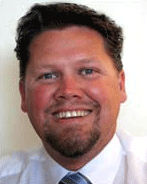

In clothing world with technology, what hand of expertise does Smart Fabrics retain? How has company established itself so far in this arena?
I started Smart Fabrics after becoming aware of the Wearable Electronics industry. I see it as a real growth area and believe the technology will become as common-place as pens and paper in our every day lives.
We have become the leading company in the Asia Pacific region by continually being involved in the latest technology – we work with cutting edge companies to bring new products to market.
Talking more specifically, can we know your observation on movements in Wearable Electronics markets? What future does it hold?
Certainly, there is good future for Wearable Electronics, however, the shape of the future is still uncertain.
There are number of important and powerful companies investigating opportunities in the market sector at the moment, some are waiting to see what becomes available, while others are getting in and moving things forward.
No matter who is involved in the industry, it is certain that it is here to stay and Wearable Electronics products will become a standard part of our every-day lives.
What are the salient features of the products you offer? What are the end uses?
I believe the most salient features of Wearable Electronics to be : light-weight, easy integration and simple functionality.
The uses of Wearable Electronics are almost endless, imagine being able to replace hard plastic switches with a printed icon on a piece of cloth.
Having the basic controls of your phone built into every shirt that you own; many of the functions on your car dashboard will be a printed symbol on the interior upholstery and you will no longer need a bag to carry your laptop because the laptop could be part of the bag itself.
END USERS - • Tech savvy teenagers with iPod Control Backpacks • Soldiers under extreme conditions in the field • Athletes obtaining peak physical performance • Personnel in high-risk jobs like firefighting • Sick, elderly & less mobile patients • Doctors monitor a patient's health statistics & condition • Monitoring the health of newborn babies • Gaming consoles & portable units with touch & gesture sensors • Educational toys for young toddlers or those with learning disabilities • The digital home; remote controls to be built into the arms of sofasToday’s Tech savvy market is always on ‘want’ for ‘better’ both in performance and economic context. What strategies make this possible at Smart Fabrics?
100% agreed – today’s consumers want technology to make their lives easier and also want it at reasonable prices.
We are releasing a range of Wearable Electronics consumer accessories in the coming months that will allow consumers easier control of their personal electronics.
We believe that offering high quality products that deliver tangible usage value at reasonable prices is what consumers want and our range of accessories will set out to fill that space.
What is the scope of emerging markets for the industry, geographically?
Geographical target markets in the early stages of Wearable Electronics are those that are (in no particular order) :
• technologically mature • easy to access (ie minimal trade barriers) • where consumers have a high level of disposable income • that have a large installed base of consumer electronics • that have a desire for consumer productsIn present times, how do you see Smart Textiles industry performing globally? Can you figure out the market share for smart textiles worldwide?
The Interactive Textile industry is beginning to really accelerate with some real power-house brands taking up positions in the market.
Also, VDC (Venture Development Corporation) report estimates the global demand for Smart Fabrics & Interactive Textiles (SFIT) products will reach $1,129m by 2010.
Presently, which challenges does the select sector struggle to overcome?
The main hurdle within the sector is its newness. The convergence of textiles and technology has created the new sector and because it is so new, established brand holders are somewhat cautious about making a ‘big’ entry into the market.
Most large apparel brands are interested in the market and some are creating pilot ranges to test demand, but a yet no one has made a ‘big’ push into the market.
For venturing into Wearable Electronics business, which all ‘musts’ are required to be counted on? How capital-intensive is the business?
The level of capital required depends on what position within the market you want to occupy as each level has it’s own associated costs & business intelligence requirements :
• design & IP (Intellectual Property) development • manufacturing • distribution • integration • accessory development • reselling / retailing • sales / marketing • after sales supportAll these areas have different cash needs & also require vastly difference skill-sets & relationship management.
This question is somewhat difficult to answer from an industry-wide perspective.
DISCLAIMER: All views and opinions expressed in this column are solely of the interviewee, and they do not reflect in any way the opinion of Fibre2Fashion.com.